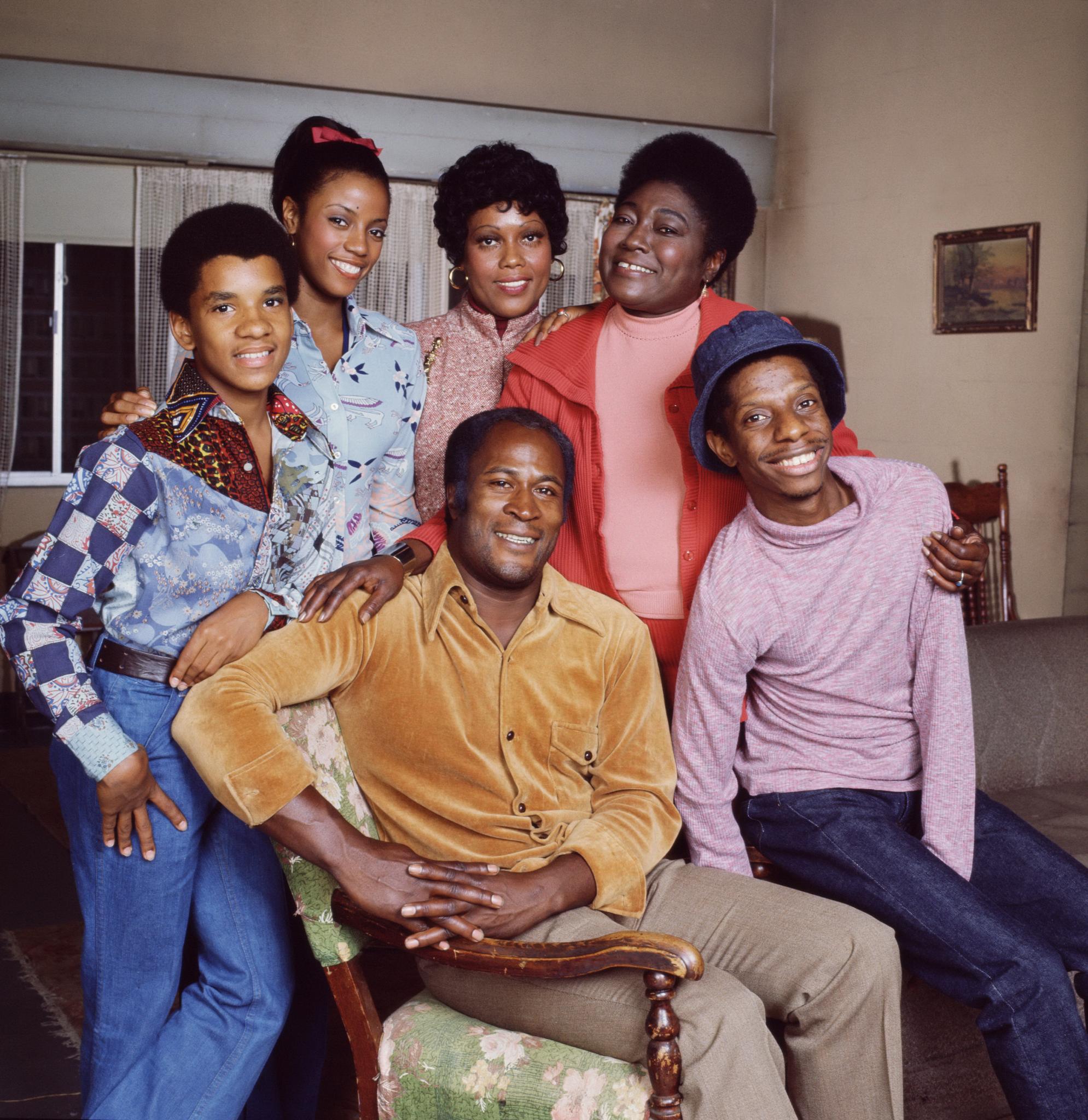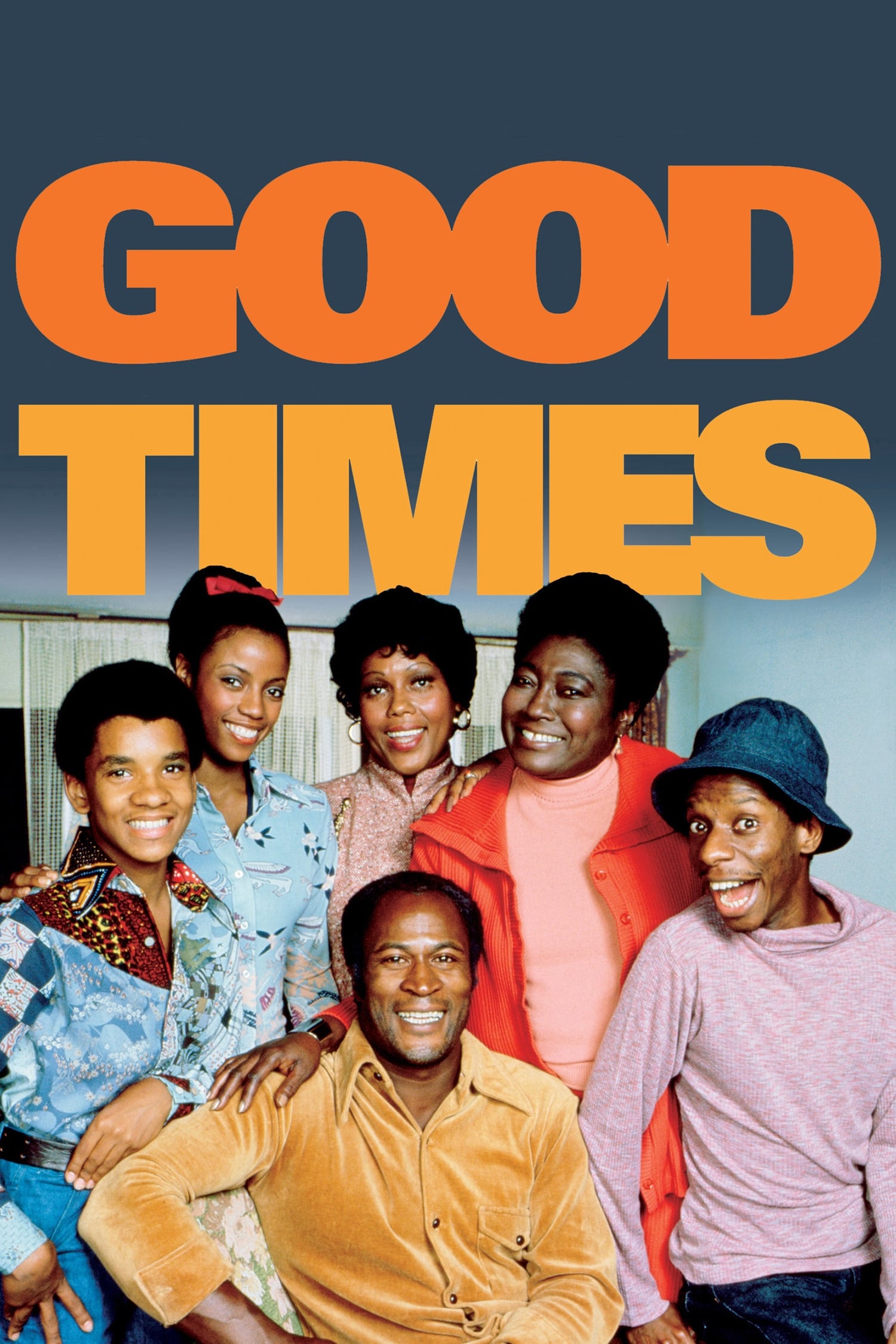

Esther Rolle hoped this would bring a shift in J.J.'s character from the clownish Kavorka Man he had been, to a more responsible Man Of The House. The show's most controversial move was killing off patriarch James at the beginning of the fourth season. was not a good role model for blacks, and Amos felt the show was becoming more about his antics, than about its original intent to be about family values. And like most Lear shows of the time, Good Times wasn't afraid to moralize or bring up controversial topics.īoth Esther Rolle and John Amos grew dissatisfied with J.J's character. Despite the fact that those efforts usually ended in bitter disappointment, the show remained surprisingly positive and uplifting. Most episodes featured the efforts of the Evans to get by in the ghetto and make a better life for themselves. And their neighbor, Willona Woods (Ja'net Du Bois): Sassy Black Woman, Drop-In Character.
 Building superintendent Nathan Bookman (Johnny Brown), derisively nicknamed "Buffalo Butt" or "Booger",. Michael Evans (Ralph Carter): "The Militant Midget", male Soapbox Sadie, The Smart Guy. Thelma Anderson, nee Evans (Bern Nadette Stanis): The Heart. ( Jimmie Walker): Catchphrase machine, Jive Turkey, The Wisecracker, Kavorka Man (cleaned up in later seasons) James Evans ( John Amos): Patriarch, Chew Toy. Florida Evans ( Esther Rolle): Matriarch, occasional Mama Bear. The show, a Spin-Off of Lear's earlier comedy Maude (itself spun off from All in the Family), followed the lives of the Evans family, a poor black family living in the high-rise projects of Chicago: The Messenger is far from flashy, but it is sprinkled with moments of interesting visuality: for instance, shots of playing cards floating around in the air, engaged in a kind of surreal dance.Good Times was a Norman Lear-produced Sitcom that ran on CBS from 1974–79. Cinematographer Geoffrey Hall, whose oeuvre includes Chopper, The Tourist and Red Dog: True Blue, uses images that are faded, like timeworn photographs, and the production, set and costume design have a musty, almost mildewy texture. The vibes get neo-noirish at times, with a moody YA energy reminiscent of Rian Johnson’s 2005 film Brick, but more laid-back and Australian.Ī retro flavour is baked into the show’s aesthetic. The directors (Daniel Nettheim, Helena Brooks and Jennifer Leacey) and screenwriters (Sarah Lambert, Kim Wilson, Kirsty Fisher and Magda Wozniak) deftly balance comedy and drama, creating a subtle and strange quirkiness. Marv is the show’s goofiest and most lighthearted character, summing up Ed’s encounters as “a lonely old lady who you kissed better, a rapey bad guy, and a running girl who kicked you in the nuts”. Sign up for the fun stuff with our rundown of must-reads, pop culture and tips for the weekend, every Saturday morning By the fourth episode (the first four form the extent of this review) Ed is building confidence and embracing his hero-ish status, telling a priest: “That’s why I’m here – I help people.” Things get darker at the second address, home of an abusive husband at the third, Ed follows a young runner who mistakes him for a stalker. Before long Ed is delivering her flowers and the pair are partaking in some intergenerational smooching – the domain of Harold and Maude, via some Amélie-esque small acts of kindness. At the first resides an elderly lady who mistakes him for somebody from her past called Jimmy. If Ed’s head is a little foggy, at least he knows where to go: those mysterious addresses. When Ed asks his mother about the meaning of an obscure-sounding quote, mum’s response tells us she’s been here before: “What it means is my son’s up to his usual nonsensical bullshit.” Ed is the kind of character sometimes described as an “antihero”, charmingly brought to life by McKenna with an aloof, distractible, sleepy-eyed energy his performance has the vibes of a young Ben Mendelsohn, from the era of The Year My Voice Broke and The Big Steal.
Building superintendent Nathan Bookman (Johnny Brown), derisively nicknamed "Buffalo Butt" or "Booger",. Michael Evans (Ralph Carter): "The Militant Midget", male Soapbox Sadie, The Smart Guy. Thelma Anderson, nee Evans (Bern Nadette Stanis): The Heart. ( Jimmie Walker): Catchphrase machine, Jive Turkey, The Wisecracker, Kavorka Man (cleaned up in later seasons) James Evans ( John Amos): Patriarch, Chew Toy. Florida Evans ( Esther Rolle): Matriarch, occasional Mama Bear. The show, a Spin-Off of Lear's earlier comedy Maude (itself spun off from All in the Family), followed the lives of the Evans family, a poor black family living in the high-rise projects of Chicago: The Messenger is far from flashy, but it is sprinkled with moments of interesting visuality: for instance, shots of playing cards floating around in the air, engaged in a kind of surreal dance.Good Times was a Norman Lear-produced Sitcom that ran on CBS from 1974–79. Cinematographer Geoffrey Hall, whose oeuvre includes Chopper, The Tourist and Red Dog: True Blue, uses images that are faded, like timeworn photographs, and the production, set and costume design have a musty, almost mildewy texture. The vibes get neo-noirish at times, with a moody YA energy reminiscent of Rian Johnson’s 2005 film Brick, but more laid-back and Australian.Ī retro flavour is baked into the show’s aesthetic. The directors (Daniel Nettheim, Helena Brooks and Jennifer Leacey) and screenwriters (Sarah Lambert, Kim Wilson, Kirsty Fisher and Magda Wozniak) deftly balance comedy and drama, creating a subtle and strange quirkiness. Marv is the show’s goofiest and most lighthearted character, summing up Ed’s encounters as “a lonely old lady who you kissed better, a rapey bad guy, and a running girl who kicked you in the nuts”. Sign up for the fun stuff with our rundown of must-reads, pop culture and tips for the weekend, every Saturday morning By the fourth episode (the first four form the extent of this review) Ed is building confidence and embracing his hero-ish status, telling a priest: “That’s why I’m here – I help people.” Things get darker at the second address, home of an abusive husband at the third, Ed follows a young runner who mistakes him for a stalker. Before long Ed is delivering her flowers and the pair are partaking in some intergenerational smooching – the domain of Harold and Maude, via some Amélie-esque small acts of kindness. At the first resides an elderly lady who mistakes him for somebody from her past called Jimmy. If Ed’s head is a little foggy, at least he knows where to go: those mysterious addresses. When Ed asks his mother about the meaning of an obscure-sounding quote, mum’s response tells us she’s been here before: “What it means is my son’s up to his usual nonsensical bullshit.” Ed is the kind of character sometimes described as an “antihero”, charmingly brought to life by McKenna with an aloof, distractible, sleepy-eyed energy his performance has the vibes of a young Ben Mendelsohn, from the era of The Year My Voice Broke and The Big Steal. 
There are inferences that the protagonist might be a little non compos mentis, hallucinatory point-of-view shots occasionally displaying things that aren’t there.







 0 kommentar(er)
0 kommentar(er)
